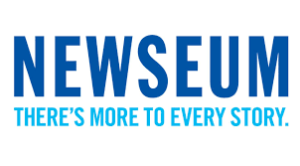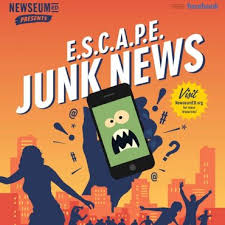- MN ABE Connect
- Archive
- Build Critical Thinking Skills and Hit the Content Standards Trifecta
 March 19, 2018
March 19, 2018
Build Critical Thinking Skills and Hit the Content Standards Trifecta
Stephanie Sommers, ACES CoordinatorIn a time when terms like “fake news” and “alternative facts” have become a part of our regular conversations, it is more important than ever for our adult learners to be able to evaluate the information they are given. As adult educators, we need to build the capacity of our learners to differentiate between fact and opinion, recognize bias, and make decisions that are informed by reliable evidence. In other words, we need our adult learners to have strong critical thinking skills.
To assist teachers who are hoping to incorporate more critical thinking activities into their lessons, a new resource has been added to the Critical Thinking section of the ACES resource library: NewseumED and its Tools for Teaching Media Literacy.
 The Newseum is an actual museum located in Washington, D.C. that “promotes, explains and defends free expression and the five freedoms of the First Amendment: religion, speech, press, assembly and petition.” As part of their mission, they have developed NewseumED, which is a free online learning platform. The Tools for Teaching Media Literacy comprise just one section of their EDTools collection. The resources are all free, but users are encouraged to create an account in order to access the most content.
The Newseum is an actual museum located in Washington, D.C. that “promotes, explains and defends free expression and the five freedoms of the First Amendment: religion, speech, press, assembly and petition.” As part of their mission, they have developed NewseumED, which is a free online learning platform. The Tools for Teaching Media Literacy comprise just one section of their EDTools collection. The resources are all free, but users are encouraged to create an account in order to access the most content.

The Media Literacy Resources include activities, lessons, and case studies that explore how the language in news stories influence us and how to know the difference between a story that is worth sharing and one that is, well, junk. In fact, one of the activities from the collection that caught my eye is called “E.S.C.A.P.E. Junk News,” and it teaches learners to think of E.S.C.A.P.E. as an acronym that will help them remember six key concepts for evaluating information (Evidence, Source, Context, Audience, Purpose, and Execution).
To support this activity, there are notes about what to prepare and six very well-designed worksheets (one for each of the key concepts) that guide learners through the process. All the teacher needs to supply is a news story.
To build on the skills that students will develop by doing this activity and practice using the ESCAPE process, there are several other related activities that focus on evidence (Evidence: Do the Facts Hold Up?) and sources (Source: Can I Trust the Creator?). The materials for these activities are designed to be used with middle and high school students, but the design is very clean and appropriate for use with adults.
By now you are sure to have heard about the three key shifts included in the English Language Arts (ELA) section of the College & Career Readiness Standards (CCRS):
- Regular practice with complex texts and their academic language
- Reading, writing, and speaking grounded in evidence from texts, both literary and informational
- Building knowledge through content-rich nonfiction
By definition, news articles are nonfiction texts, and they are often complex. By using the resources on the NewseumED website, you can build the ACES/TIF skill of critical thinking while also integrating CCRS. If your learners use technology in order to access or write about the news articles, you can address Northstar Digital Literacy skills in the same lesson.
So, check out the NewseumED website today, and plan a lesson that will give you a MN ABE Content Standards trifecta!
Originally published 11/13/17
Newsletter Signup
Get MN ABE Connect—the official source for ABE events, activities, and resources!
Sign UpArticle Categories
- ABE Foundations/Staff Onboarding
- ACES/Transitions
- Adult Career Pathways
- Assessment
- CCR Standards
- Citizenship
- COVID-19
- Cultural Competency
- Digital Literacy/Northstar
- Disabilities
- Distance Learning/Education
- ELA
- Equity/Inclusion
- ESL
- HSE/Adult Diploma
- Listening
- Math/Numeracy
- Mental Health
- Minnesota ABE
- One-Room Schoolhouse/Multilevel
- Professional Development
- Program Management
- Reading
- Remote Instruction
- Science
- Social Studies
- Speaking/Conversation
- Support Services
- Teaching Strategies
- Technology
- Uncategorized
- Volunteers/Tutors
- Writing